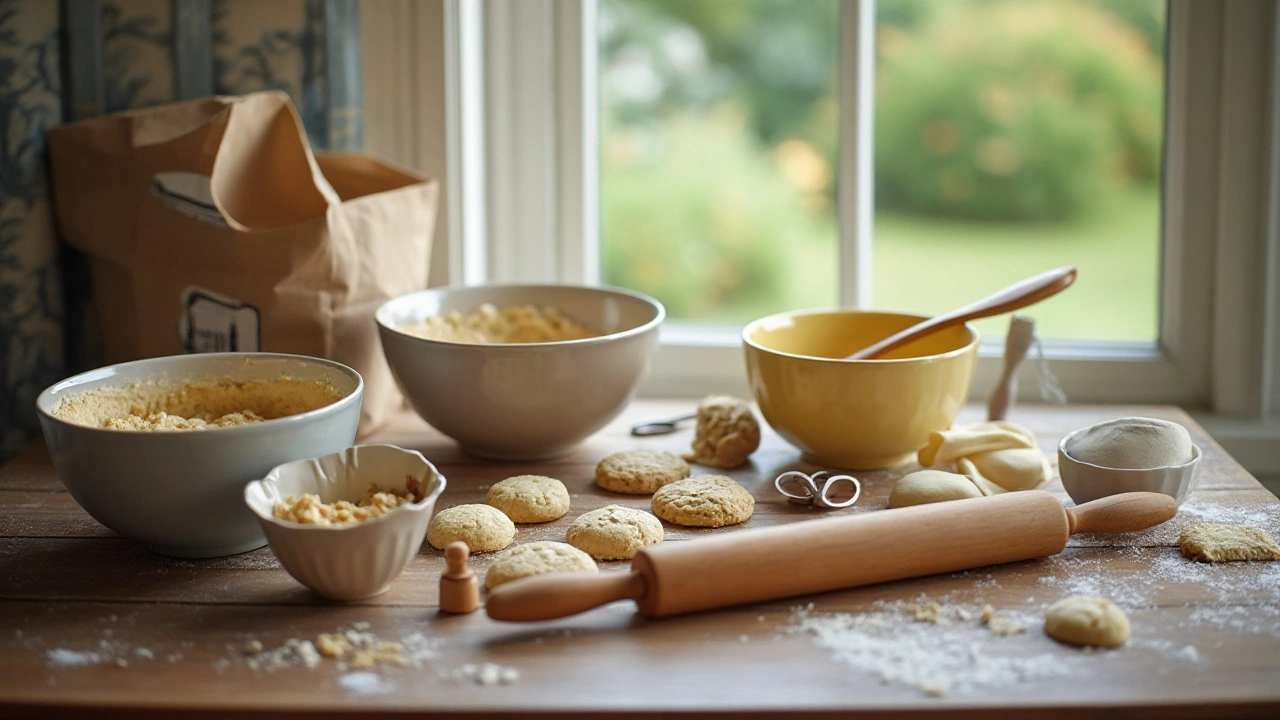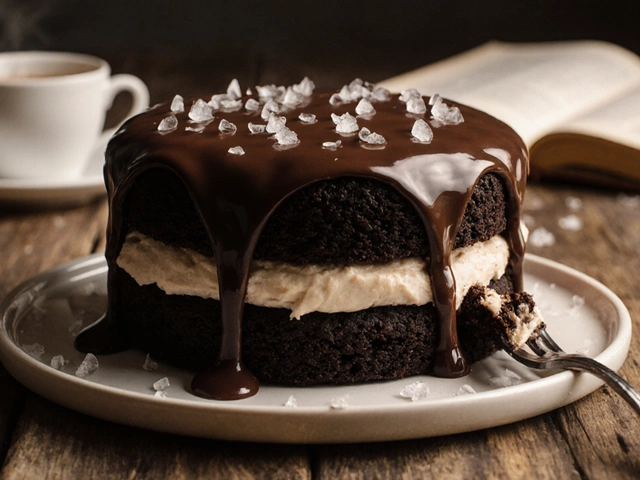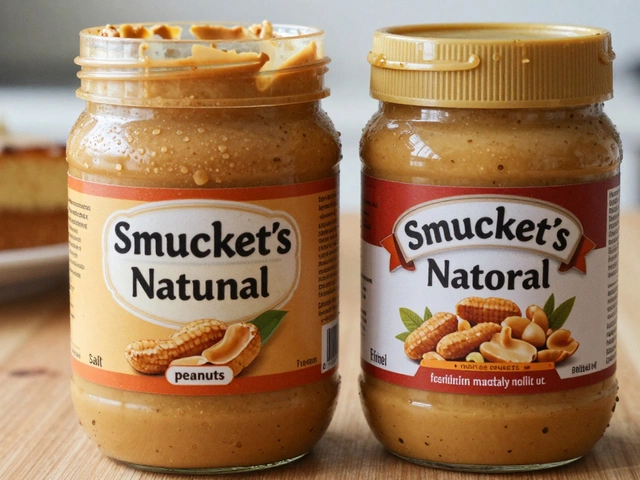Have you ever found yourself in the delightful debate of dough versus batter when it comes to baking cookies? It's a common crossroads for home bakers who seek the ideal texture and flavor in their cookie creations. While both dough and batter are essential to the world of baking, understanding their nuances can transform a mere recipe into a culinary masterpiece.
In this exploration, we'll navigate through the differences between dough and batter, considering factors like moisture content, mixing techniques, and the roles of various ingredients. We'll also share insights into the history of cookie-making, shedding light on why these bases have evolved the way they have. Whether you're a seasoned baker or just starting out, these tips and tricks are sure to make your cookie adventure a successful and rewarding one.
- Defining Dough and Batter
- History and Origin of Cookie Techniques
- Factors Influencing Cookie Texture
- Popular Cookie Types and Their Bases
- Expert Tips for Perfect Cookies
- Experimenting with Cookies at Home
Defining Dough and Batter
Dough and batter, two terms that often appear in baking recipes, hold the key to creating delightful treats. The distinction between these two lies mainly in their consistency and use. Typically, dough refers to a mixture that is thick enough to be handled by hand. It has a higher flour-to-liquid ratio, which gives it a shapeable, pliable texture. This kind of mix is paramount when aiming to bake items like bread, pie crusts, and of course, cookies. Dough is firm yet flexible, allowing bakers to mold it, roll it, or even cut it into desired shapes before baking.
On the flip side, batter is much more fluid and is usually spooned or poured into baking pans. The balance between liquid and dry ingredients leans towards the former, making it unsuitable for hand shaping, yet perfect for cakes, pancakes, and some quick breads. The beating process involved in making a batter incorporates more air, lending a lighter structure to the final bake. A fascinating aspect about batters is their versatility in producing varied results based on simple alterations in ingredient ratios.
"Baking is both an art and a science. Understanding the subtle science of dough and batter turns simple ingredients into magical creations," says renowned pastry chef Dominique Ansel.
The choice between using dough or batter comes down to the desired final texture and flavor of the baked good. Traditional cookie recipes typically call for dough because it helps achieve that delicate balance between a chewy center and a crisp edge—a hallmark of a perfect cookie. However, some modern or experimental cookie varieties, like soft cake cookies, can surprisingly start from a batter.
Another intriguing point is how the addition or reduction of certain ingredients can influence whether a combination becomes more like a dough or a batter. Ingredients like eggs, milk, or even fats play crucial roles. Too much liquid can tip a dough into batter territory, while extra flour can easily turn a semi-fluid batter into a workable dough. It's not just about taste but also science.
To shed some numbers on the concept, a basic cookie recipe using dough might contain around a 3:1 flour-to-liquid ratio. Comparatively, cake batter might have a nearly equal ratio, perhaps flirting closer to 1:1. These measurements aren't strict rules but more like guidelines to help bakers gauge the expected consistency of their mix.
History and Origin of Cookie Techniques
The journey of cookies begins far back in time, with roots tracing to Persian times around the 7th century A.D. when sugar became more prevalent in baking. These early delights were far from the chocolate chip cookies we savor today, yet they laid the foundation for a globally beloved treat. Navigating through trade routes, the technique of crafting cookies spread to Europe, where regions embraced them, adding local spices, nuts, and dried fruits. By the time of the Renaissance, recipes were becoming more refined, evident in detailed cookbooks of the era, emphasizing the importance of dough consistency and ingredient proportions.
During the Industrial Revolution, cookie-making underwent a transformative evolution. With the invention of baking powder in the 19th century, the path was cleared for the creation of cookies that were light, fluffy, and no longer required laborious yeast fermentation. This evolution in technique reflected in the recipes and how home bakers approached the making of batter versus dough. An intriguing chapter in cookie history, the American introduction of the now-iconic chocolate chip cookie in the 1930s, showcased innovation at its finest. Ruth Wakefield, creator of the Toll House cookie, allegedly stumbled upon this invention, proving once again how sometimes, a wonderful accident is behind a sweet success story.
As the realm of cookies evolved, so did its techniques, driven by cultural exchanges and culinary curiosity. By integrating local flavors and techniques, the recipes began to diverge, each bringing unique textures and tastes. Italian biscotti, French macarons, and Danish butter cookies all stem from the same desire to create something delicious but used different approaches, either leaning towards a stiffer dough or a smoother batter. Each of these approaches has historical significance, with factors influencing the choice due to climate, available ingredients, and even societal influences.
"The greatest innovation in cookie-making came with the embrace of diverse culinary techniques," notes food historian William Sitwell. "Each advancement reflected a deeper understanding of ingredients and their interactions, setting the stage for artistic culinary expression."
Interestingly, statistical data reveals the changing trends in baking preferences over centuries.
| Century | Preferred Technique |
|---|---|
| 18th | Dough |
| 19th | Dough with leavening agents |
| 20th | Batter for diverse textures |
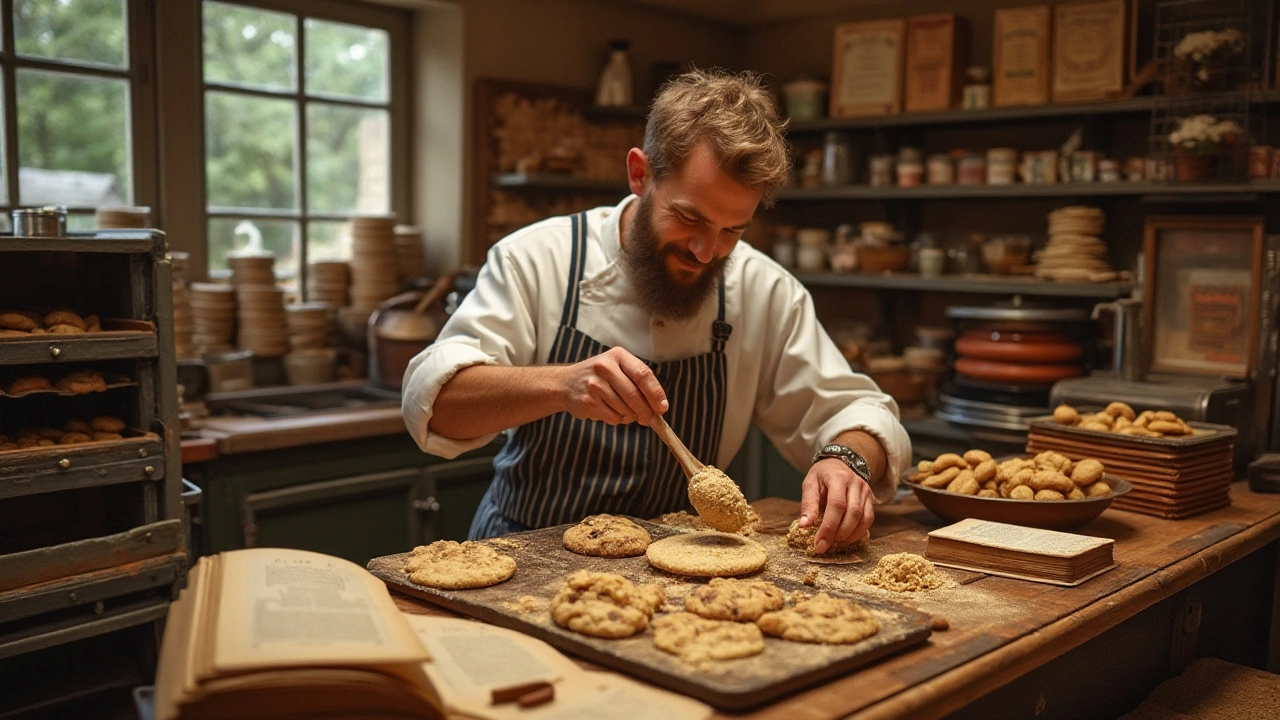
Factors Influencing Cookie Texture
When you bite into a freshly baked cookie, the texture is often the first thing you notice. From the crisp snap of a ginger snap to the soft warmth of a chewy chocolate chip cookie, texture is an integral aspect of the cookie experience. The journey to achieving that perfect texture begins with understanding the ingredients and techniques that steer the dough or batter into different textural territories. Proportions of fat, sugar, and flour significantly influence results. For example, more fat often lends to softer cookies, while more sugar creates a crisper finish. Interestingly, the type of sugar matters too -- brown sugar brings moisture due to its molasses content, helping achieve a chewier texture, whereas white sugar contributes to an aerobic rise, offering a different kind of crumb.
"The trick to texture is balance," says culinary expert Sarah Jones. "Understanding the interaction between ingredients opens up endless possibilities in the kitchen."
Another pivotal factor is how the mixture is handled -- how long it's beaten and at what speed. Over-mixing can lead to gluten development, yielding a more cake-like cookie instead of the desired crumbly consistency. Temperature plays its part as well; dough that's chilled will spread less during baking, creating a thicker profile as seen often in homemade cookies. Baking time and temperature shouldn't be overlooked either. Cookies baked at higher temperatures for shorter periods tend to brown more rapidly on the edges, resulting in a mix of crispy and chewy centers. It's a trick that many seasoned bakers use to add textural contrast.
The choice between using dough or batter isn't merely technical; it can be cultural and historical. Certain cookies, like the traditional Scottish shortbread, rely on an exact dough consistency passed down through generations. But as modern influences seep into kitchens, experimental bakers sometimes push these boundaries, using batter-like methods for usually dough-based recipes to achieve unique results. Ingredients like oats and nuts, which disrupt the uniformity of doughs and batters, introduce another layer of decision-making. Whole grains and nut butters, for example, add nutritional value and offer a hearty bite, setting them apart in their scratchy constituents compared to the purity of a pristine sugar cookie.
Popular Cookie Types and Their Bases
When diving into the world of cookies, understanding the base - whether it's dough or batter - opens up a playground of textures and flavors. Each type of cookie has a unique relationship with its foundational base, and this delicate balance defines not only its taste but also its characteristic consistency. Starting with the classic chocolate chip cookie, which is a staple in many households, we find that it generally relies on a dough. This dough is a sturdy mix, often consisting of butter, sugar, eggs, flour, and chocolate chips. It's designed to hold its shape relatively well when baked, yet still melt in your mouth with a softness due to the balance of moisture.
Moving to a lighter treat, the delicate French macaron is an intriguing variation. These gems are based on an almond flour and meringue mix that leans more towards a batter in terms of consistency. It demands precision. The right peak in the meringue can determine success or failure. Interestingly, the chewy and moist interior of a macaron's base contrasts with its crisp shell. According to baking expert Pierre Hermé, "the smoothness of the batter is the cornerstone of a successful macaron."
Next, consider the oatmeal cookie: rich, chewy, and heartwarming. The base here is traditionally a dough, enriched by oats that absorb the moisture, binding the ingredients into a thick consistency. Its magic lies in the interplay of textures, from the chewiness of the oats to the burst of sweetness from raisins. In contrast, a cake-like cookie, such as a whoopie pie, embraces a batter. This is a thinner, more liquid mixture, akin to cake batter, which bakes into a soft, fluffy cake sandwiching a sweet filling.
In our cookie journey, we mustn't overlook the versatile shortbread. This classic relies on a dough that is buttery, crumbly, and firm. Often containing little more than flour, butter, and sugar, it's all about simplicity. The dough's dry quality allows it to bake slowly without spreading, forming sturdy shortbread fingers or wedges that melt delicately in the mouth. Each cookie type has its base because the ingredients and their proportions are tailored to achieve a specific texture and flavor profile. To better understand, here's a brief comparison:
| Cookie Type | Base Type |
|---|---|
| Chocolate Chip | Dough |
| Macaron | Batter |
| Oatmeal | Dough |
| Whoopie Pie | Batter |
| Shortbread | Dough |
As with many cooking experiments, the key is in understanding the properties of your main ingredients and how they react together when exposed to heat. Flour, sugar, and fat ratios greatly influence whether you create a batter or dough, and thus which type of cookie you'll end up with. Armed with this knowledge, you can start to improvise and create personalized treats that satisfy your unique cravings and your oven will reward you with perfectly browned, tempting cookies every single time.
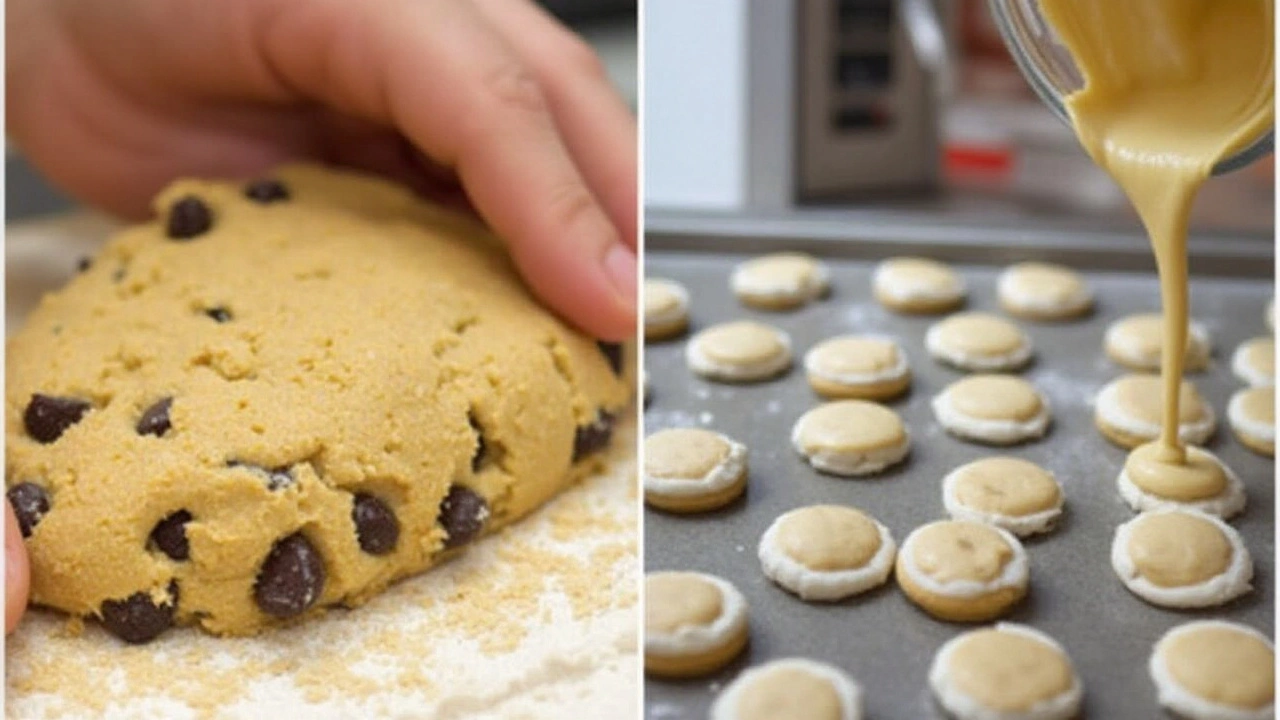
Expert Tips for Perfect Cookies
Creating cookies that are not only delicious but also perfect in texture and appearance is an art that many strive to master. The journey to achieving cookie perfection begins with an understanding of ingredients and their roles. For instance, the type of sugar you use can dramatically influence the final product. Brown sugar lends a moisture-rich and chewy texture due to its molasses content, while granulated sugar tends to produce a more crunchy result. Bakers often blend these sugars to balance texture, tailoring the recipe to suit their tastes and the preferences of those they'll share the cookies with.
Another crucial factor in cookie perfection is the use of fats. Butter, being the most common choice, not only impacts the flavor but also the spread of the cookie. Using melted butter can help cookies spread out more during baking, creating a thinner, crispier finish, whereas using chilled butter can result in a dense and chewy consistency. For those experimenting with healthier alternatives, coconut oil or avocado can be excellent substitutes, bringing their own flavors and nutritional benefits to the table.
Temperature control in every aspect of the baking process is key. Chilling the cookie dough before baking allows for the development of flavors and prevents excessive spreading, which is especially helpful for those looking to achieve thicker cookies. The oven temperature needs to be precise; it's recommended to invest in an oven thermometer to ensure accuracy. Cookies often require just a few minutes less or more to hit that sweet spot of doneness, and understanding your oven's quirks can make all the difference.
Achieving uniformity in size is another tip from experts, ensuring that cookies bake evenly. Using an ice-cream scoop or cookie scoop can help in portioning out dough consistently. Similarly, space cookies appropriately on the baking sheet to allow for proper air circulation and spreading. A baking sheet lined with parchment paper rather than greased adds to the quality of the cookie’s texture, preventing over-browning and sticking.
In a conversation with baking guru Sarah Kieffer, whom some may know as the mastermind behind pan-banging cookies, she emphasizes unpredictability in experimenting. “Don’t be afraid to shake things up by altering baking times or ingredient ratios,” she stated.
Experimentation can lead to delightful discoveries that standard recipes might not offer.Adaptation and understanding personal preferences can lead to the emergence of unique and consistently excellent cookie recipes.
From a scientific perspective, even the altitude at which you're baking can impact cookies. High-altitude baking often requires adjustments in ingredients to maintain texture and flavor due to differences in atmospheric pressure. Bakers living at higher elevations may need to tweak their recipes and practice patience as they tailor their approach to suit their environment. Ultimately, these tips are a starting point for honing your cookie baking skills, inviting you to explore new methods and ideas to create truly perfect cookies every time.
Experimenting with Cookies at Home
Creating the perfect homemade cookies is an art form that invites constant experimentation and joyful discovery. The possibilities are limitless when you start to play around with ingredients, textures, and flavors, making the notion of baking an adventure rather than a chore. When beginning to experiment, it's important to understand the balance between the basic components: flour, sugar, fat, and leaveners. This combination is what defines whether you're crafting a dough or a batter, subsequently influencing the final taste and texture of your cookies. For instance, a dough is generally thicker due to a lower proportion of liquids, which helps retain its shape during baking, whereas batters are runnier, often resulting in thinner, softer cookies.
One delightful experiment is the curious case of adding unconventional ingredients to your usual recipes. Globally, bakers have been adding everything from matcha and lavender to bacon bits and balsamic vinegar to their concoctions. Each new addition can shift the flavor profile dramatically, creating a unique cookie that can become your signature treat. Understanding the science behind these additions is key. Take baking soda and baking powder as examples; each serves a different function in leavening. Replace one with the other, and your cookies may spread out or rise unexpectedly, showcasing the importance of these invisible heroes of baking science.
The best way to experiment and ensure a successful batch of cookies is to keep one element constant while changing others to observe the variations. This is a tried-and-tested kitchen hack that has aided many home bakers around the globe. Begin with a basic chocolate chip cookie recipe and alter just the sugar type or the amount of butter. Documenting each change along with the outcome is crucial to learning and refining your process. According to Julia Child, "The only real stumbling block is fear of failure. In cooking, you've got to have a what-the-hell attitude." Her words encourage culinary courage when practicing new techniques.
To guide your experiments, here's a quick reference table to understand what various ingredients do:
| Ingredient | Function |
|---|---|
| Butter | Contributes to flavor and tenderness |
| Sugar | Sweetens and provides structure |
| Flour | Structure and texture, the base of dough |
| Egg | Binding agent, adds moisture |
| Milk or Water | Provides moisture and helps blend ingredients |
Another aspect of experimenting is timing and temperature, which can transform a cookie from chewy to crispy. A lower baking temperature and longer baking time can result in a harder, drier cookie, while high heat for a shorter time retains moisture. Start experimenting by altering the oven temperature by increments of 10 to 15 degrees Fahrenheit to see how your cookie adapts. You might find that different homemade cookies turn out best with settings you hadn't initially considered.

